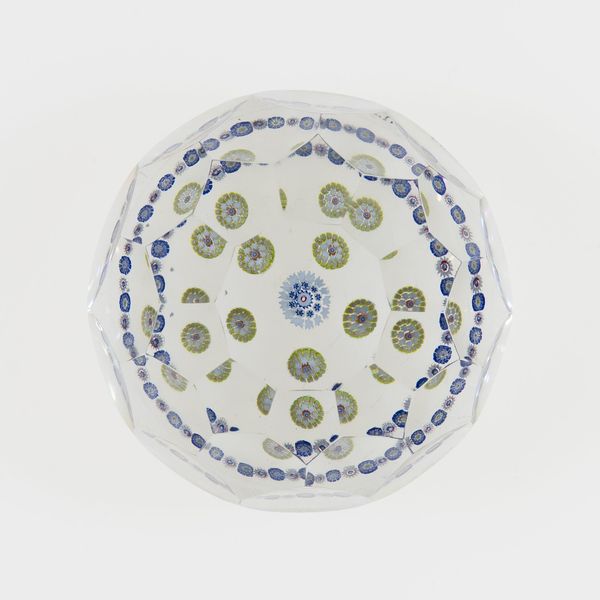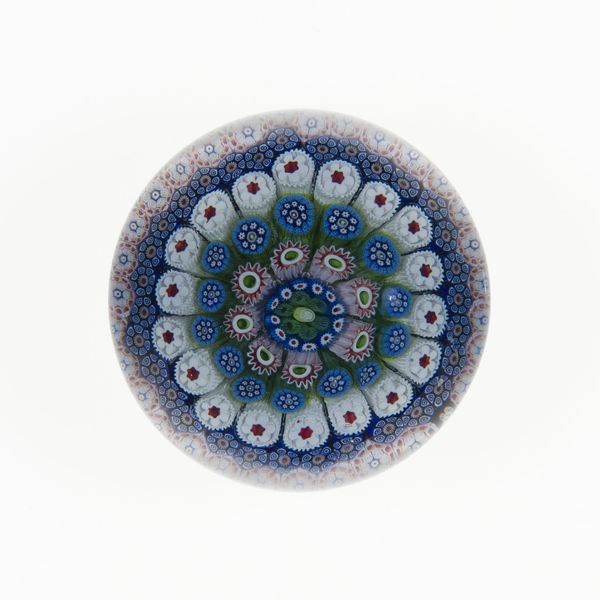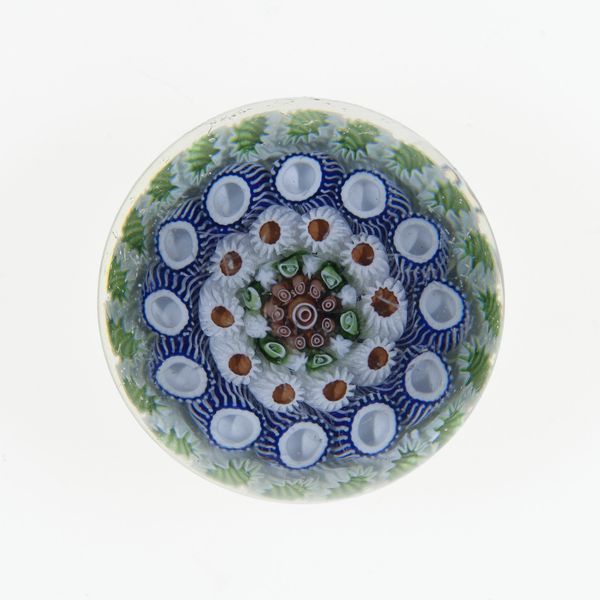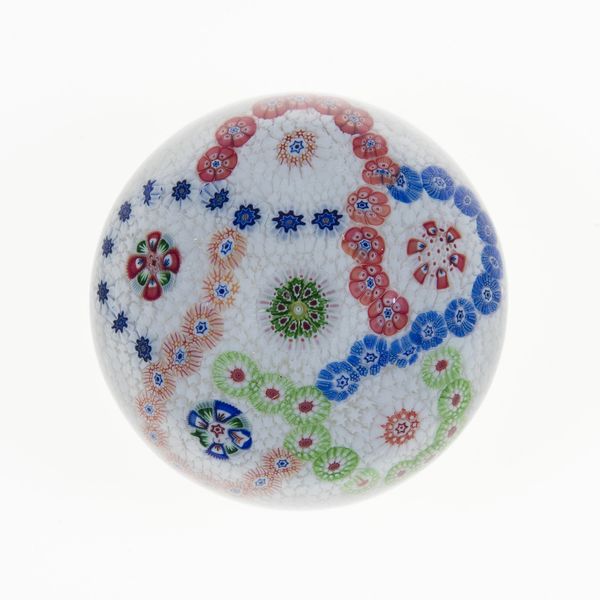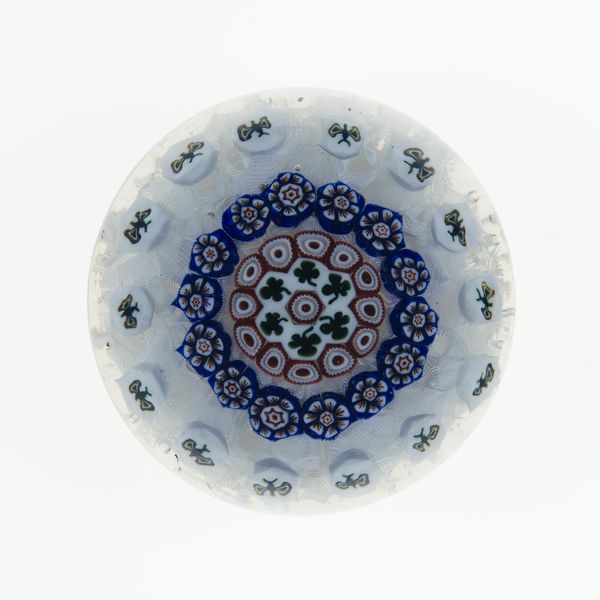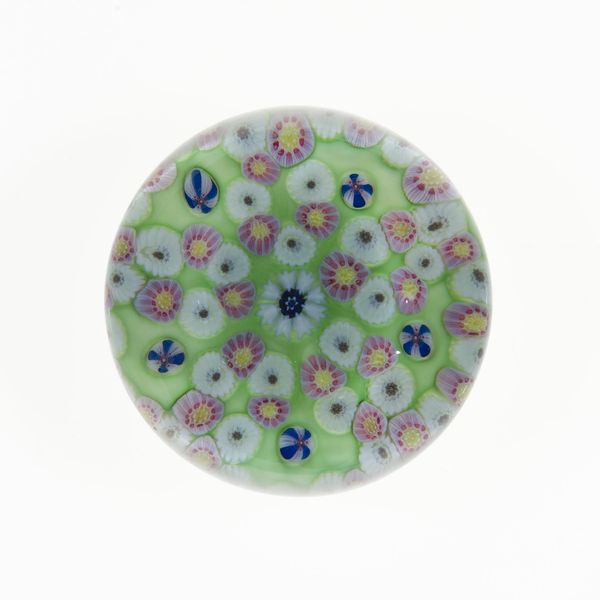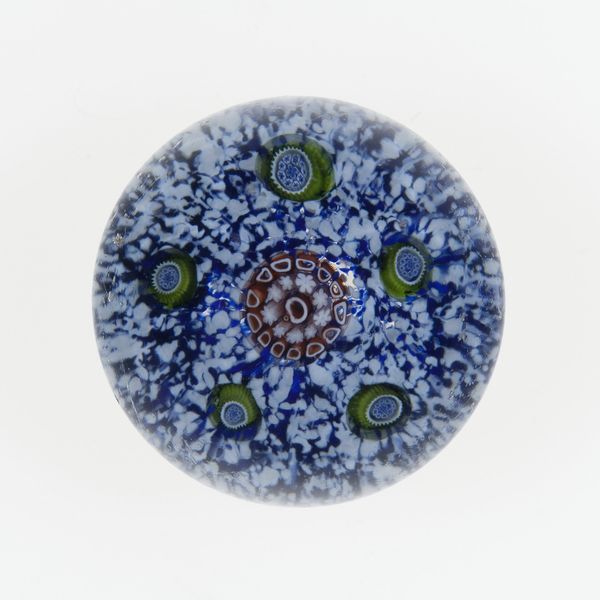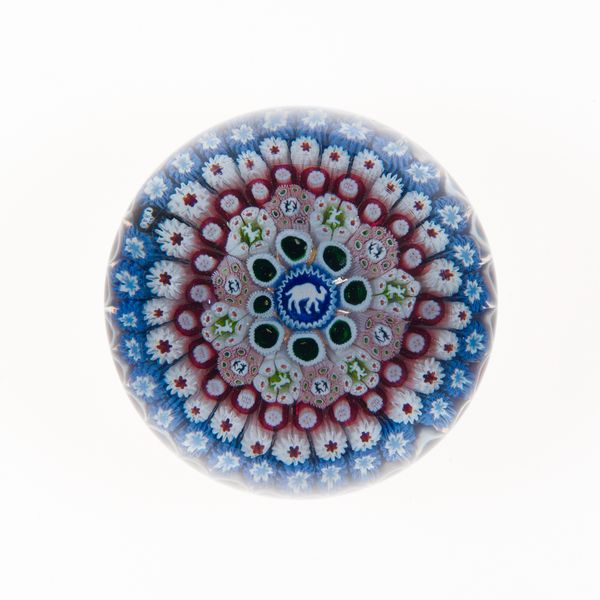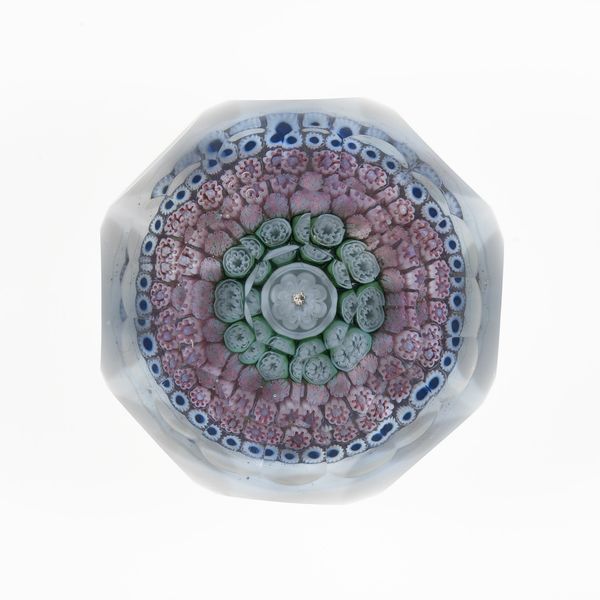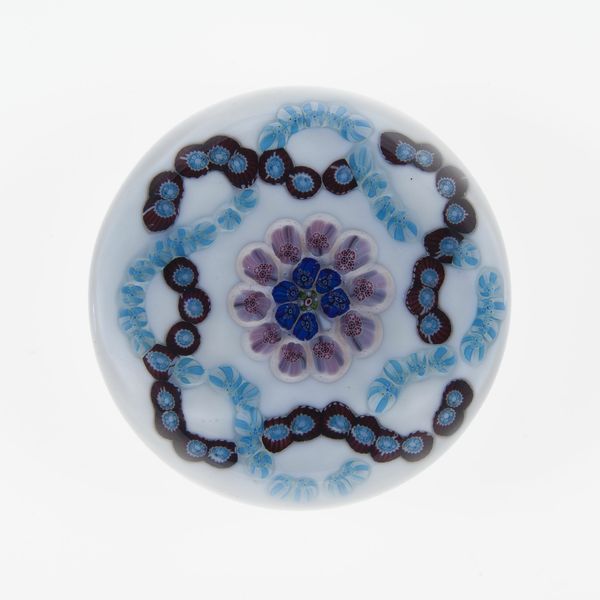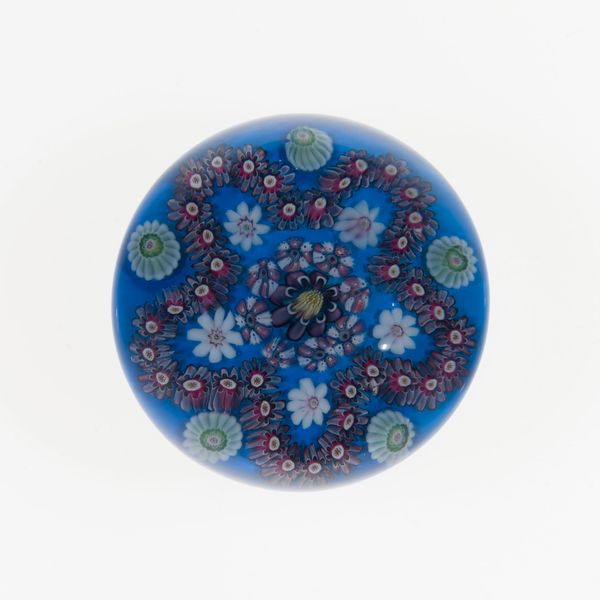
Dimensions: Diam. 9.9 cm (3 7/8 in.)
Copyright: Public Domain
Editor: This object is a "Paperweight", made between 1845 and 1860 by the Compagnie de Saint Louis in France. It's primarily made of glass, and I'm immediately struck by its delicate, almost ephemeral beauty. What is your interpretation of this piece? Curator: This paperweight exists within a specific cultural context. Think about 19th-century France. The rise of the bourgeoisie created a demand for decorative arts. How does this small, seemingly insignificant object participate in a larger system of class and taste? Editor: That's interesting! It definitely seems like a luxury item, a small indulgence. Did paperweights serve a purely aesthetic purpose, or was there more to it? Curator: Paperweights occupied an interesting space – both functional and decorative. The glassmaking itself, especially with those intricate floral designs, spoke to advancements in industry. They also acted as symbols of status, reflecting a desire for order and control in a rapidly changing society. Could we consider it a kind of early mass-produced art object for the rising middle class? Editor: So, it’s not just about prettiness; it's tied into societal shifts and technological advancements. Curator: Precisely. And the Art Nouveau influence hints at a broader European movement embracing ornamentation. Look at how this one item synthesizes craftsmanship, industrial possibility and societal values! What has caught your attention most after this exchange? Editor: Definitely thinking about how an everyday object can reflect bigger cultural narratives. I'll never look at a paperweight the same way again. Curator: And I’ll be thinking about it as a signifier of new types of consumers in Europe! Thanks for the insight.
Comments
No comments
Be the first to comment and join the conversation on the ultimate creative platform.
